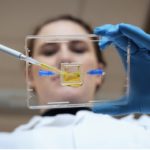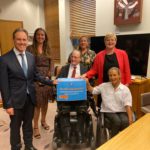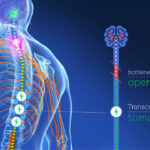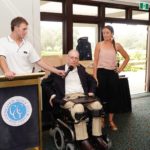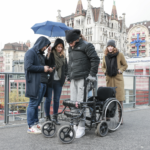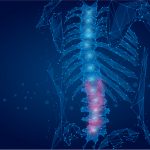Funding groundbreaking research to cure spinal cord injury A cure is in reach. It’s not a matter of if, but when. This is our mantra, and it really is closer than ever. Despite the challenges of the COVID pandemic, 2021 was…
Tag: cure paralysis
New panel of experts aims to ‘mend the gap’ in spinal cord injuries
A new international team of 32 scientists has joined forces to identify areas of promising research in spinal cord injuries. Their first project aims to mend the tiny gaps that form after a traumatic injury, writes Tom Elphick, SpinalCure Community…
Minister Hunt accepts 30,000-strong petition & creates history-making $10m neurostimulation grant
Video by @cambloom Join us on the Project Spark journey and support our campaign to transform the lives of people with spinal cord injury. Read the full story: On Wednesday 30 March, Minister Greg Hunt accepted SpinalCure Australia’s 30,000-strong petition…
Pioneering work of quadriplegic recognised in book ten years after his death
The life of a remarkable quadriplegic from Perth who introduced an innovative model of exercise rehabilitation to Australia and helped pioneer research – which is now leading to spinal injured people gaining movement and even walking again – has been…
What is neurostimulation and what is it used for in people with SCI?
What are the similarities and differences of TENS, FES, and spinal cord stimulation? Neurostimulation is changing the face of neurological rehabilitation as we know it. It has a wide variety of uses including pain relief, treatment for psychiatric diseases and…
Lloyd’s charity golf day delivers a hole in one
We were delighted to attend the Lloyd’s Charity Golf Day 2021 in November at the Concord Golf Club in Sydney. A great day of golf resulted in a fantastic fundraising result for spinal cord injury, even if there wasn’t a…
Three spinal injured people able to walk with support in new Swiss study
Another spinal cord electrical stimulation study has resulted in three people with complete spinal cord injuries (SCI) walking while supported. This Swiss study has further cemented neurostimulation as the most promising research avenue for SCI recovery. SpinalCure is set to…
SpinalCure scientist series: Prof. Simon Gandevia on how he became interested in science and spinal cord injuries
Professor Simon Gandevia is one of the world’s leading neuroscientists, and is the Deputy Director of NeuRA and Senior Principal Research Fellow, NHMRC. He is also the Study Lead for the eWALK trial, funded and initiated by SpinalCure, along with…
‘Dancing molecules’ repair spinal cord injuries in mice
For decades, spinal cord injuries have remained one of the hardest injuries for scientists to treat because nerves in our spinal cord have a limited ability to repair. But a new study from Northwestern University in the United States has…
Alex Richter’s story
Alex loves mountain bikes—he was mountain-biking when he injured himself two years ago at age 16. He was in year 11 at school. As Alex waited for help, a friend called his mum Karina and held the phone to his…



